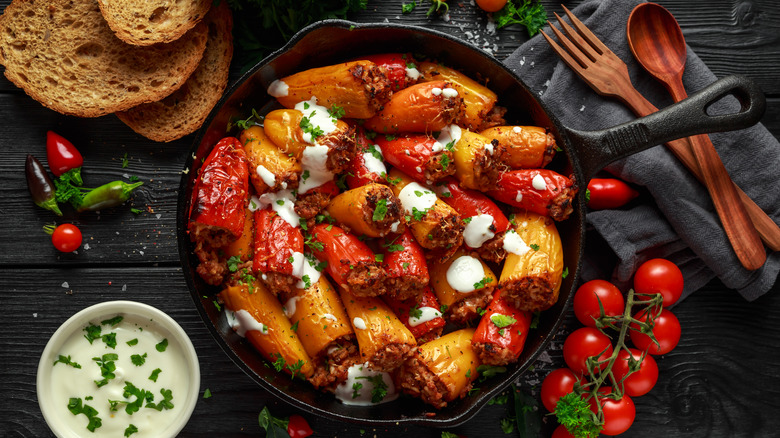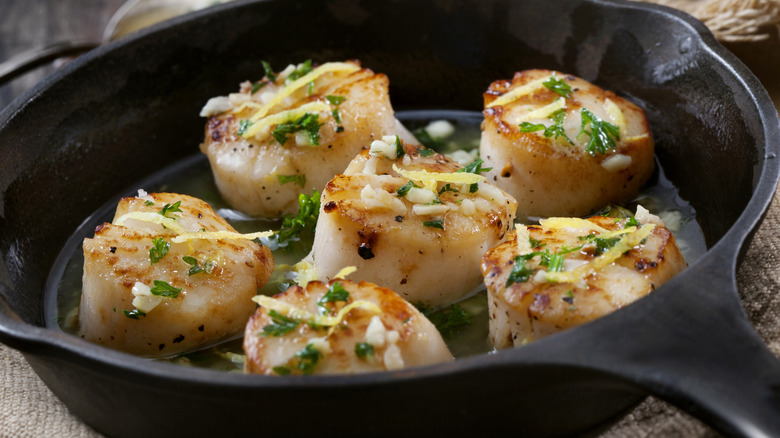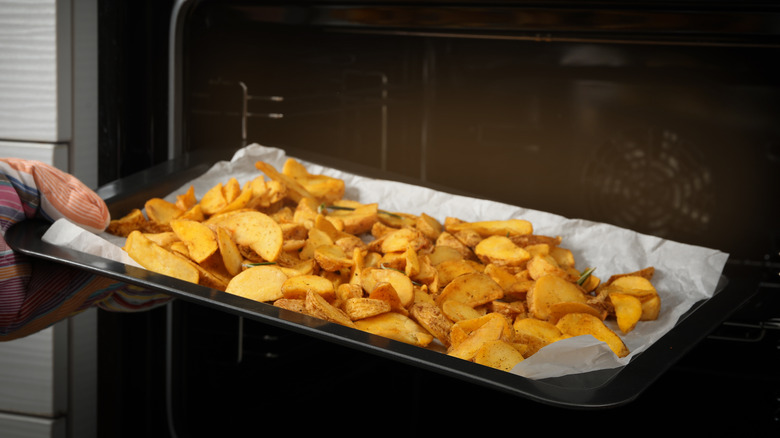The Recipe-Doubling Mistake That Totally Screws Up Your Results
Sometimes you just have to double what you're planning to make. Maybe you've got guests coming over or perhaps you just want to have a bunch of leftovers. Whatever the case, there are some pretty big mistakes you can make in the process and one of the worst is overcrowding your cooking vessel. While it might seem appealing to cram everything into a pan or pot all at once, this method will lead to extremely unevenly cooked food.
It doesn't matter if you're working with a cast iron skillet, a Dutch oven, a sheet pan, a stainless steel pot, or anything else — you never want to overcrowd your cookware. Depending on what meal you're making, you could wind up with food that's soggy, undercooked, or simply not browned and seared the way you want it. If you want to avoid this, it's important to grab another pan or cook your dish in batches.
Overcrowding cooks unevenly and traps moisture
A crowded pan means air isn't flowing around your food, so parts of your meal are being exposed to more heat than others. This means some items like chicken or seafood might be cooked properly, while other pieces of meat could still be raw. Even worse, you might turn your ingredients into soggy mush because the water in food gets released when cooking items like simple seared scallops.
If the food in your cookware is spaced out enough, this isn't a problem because the water hits the heat and turns into steam that evaporates above the pan. However, if it's overcrowded with ingredients with high water content, the liquid has nowhere to go and gets trapped. This ultimately steams your dinner, which is not a cooking technique you want to happen by accident.
Keeping your food from overcrowding is important in a wide variety of cooking methods. You shouldn't cook spaghetti in a small pot since inadequate water and space will cause the noodles to turn mushy and stick together. If you try it with deep frying chicken, the skin can't get even exposure to the oil, resulting in undercooked, patchy breading. Likewise, crowding is a mistake with roasted potatoes on a baking sheet for the same reason.
Cooking in separate batches solves the problem
Luckily, there are a couple of potential solutions if you need to make twice as much of something — just cook in multiple pans or batches. Cooking in batches results in your food having plenty of space to spread out and cook evenly and without too much moisture retention, while using multiple pans accomplishes the same goal, just faster.
In general, you want to make sure there's at least one inch between ingredients to give them space for even cooking, filling not more than half the total surface area of the pan. If you can't see the bottom of the pan at all, you've gone too far. However, these two methods do have their drawbacks.
If you're using multiple pans that's going to involve more effort and if you're cooking in batches, there's the potential of food getting cold. That said, both techniques are still worlds better than an unevenly cooked, raw, or unintentionally steamed dinner. A little extra effort and time is well worth it when balanced against ruining your entire meal.


